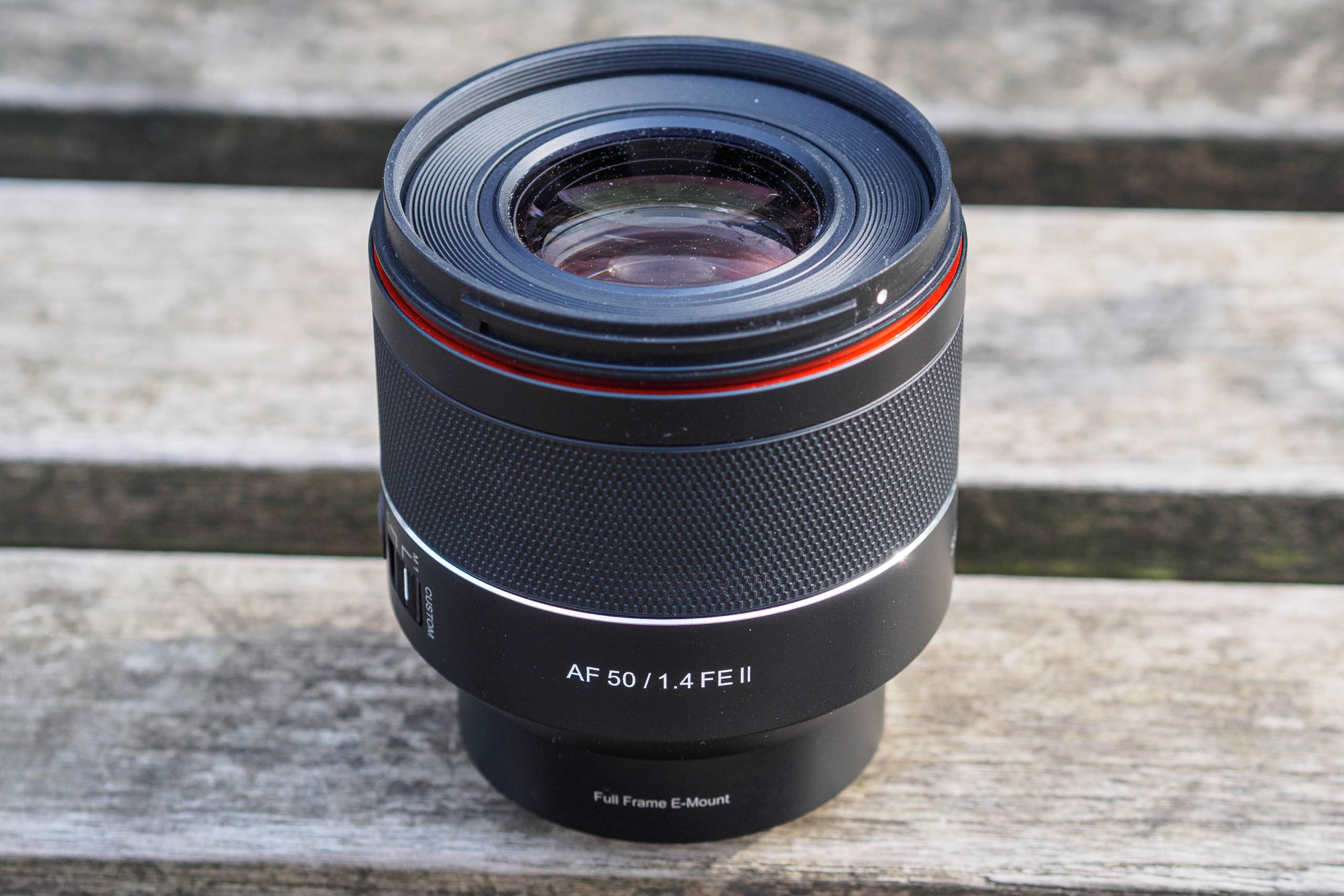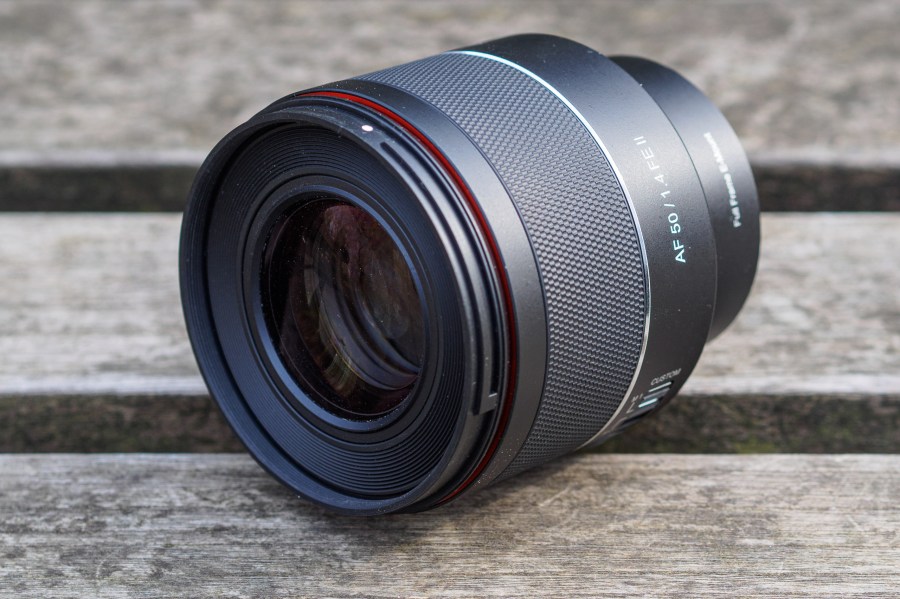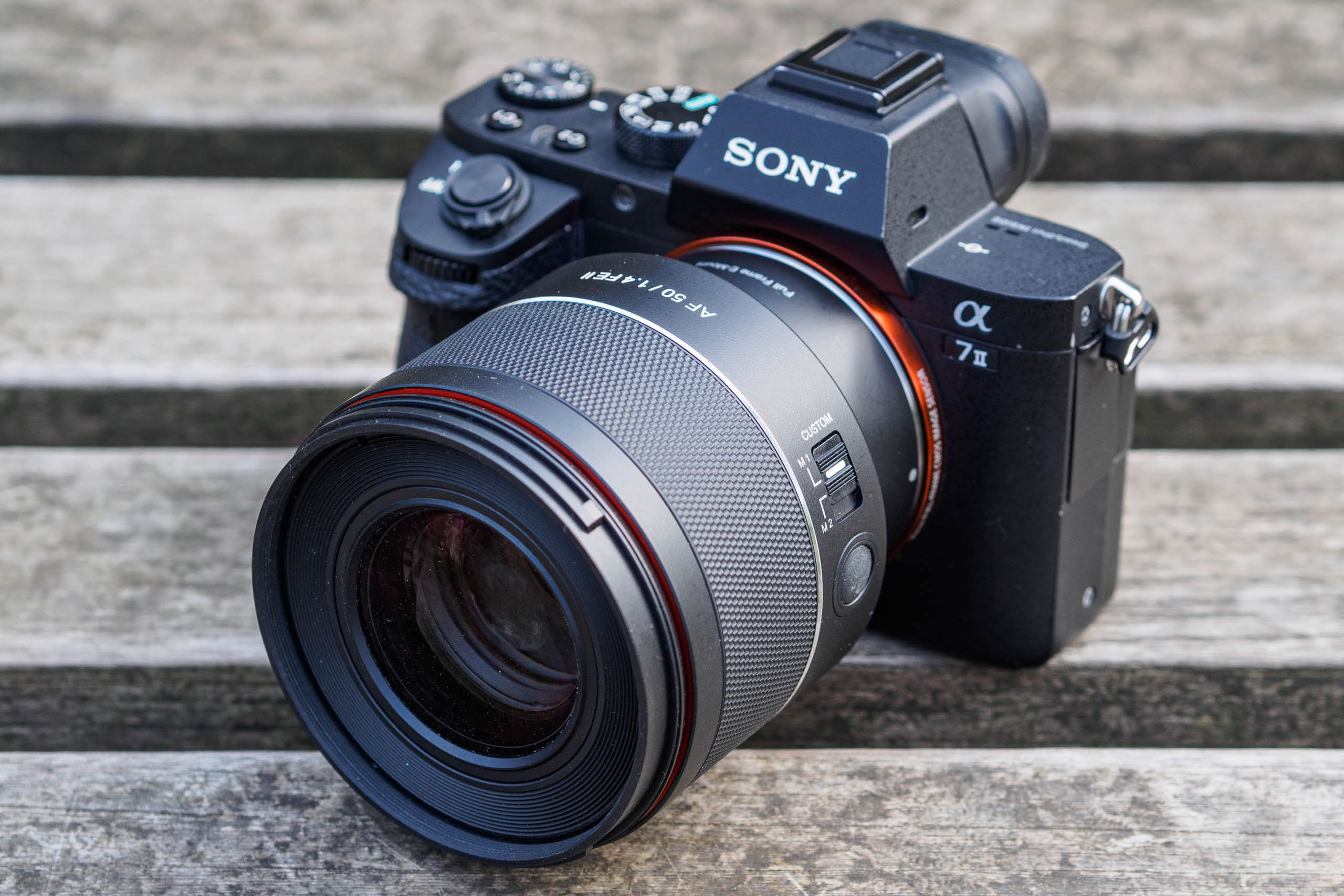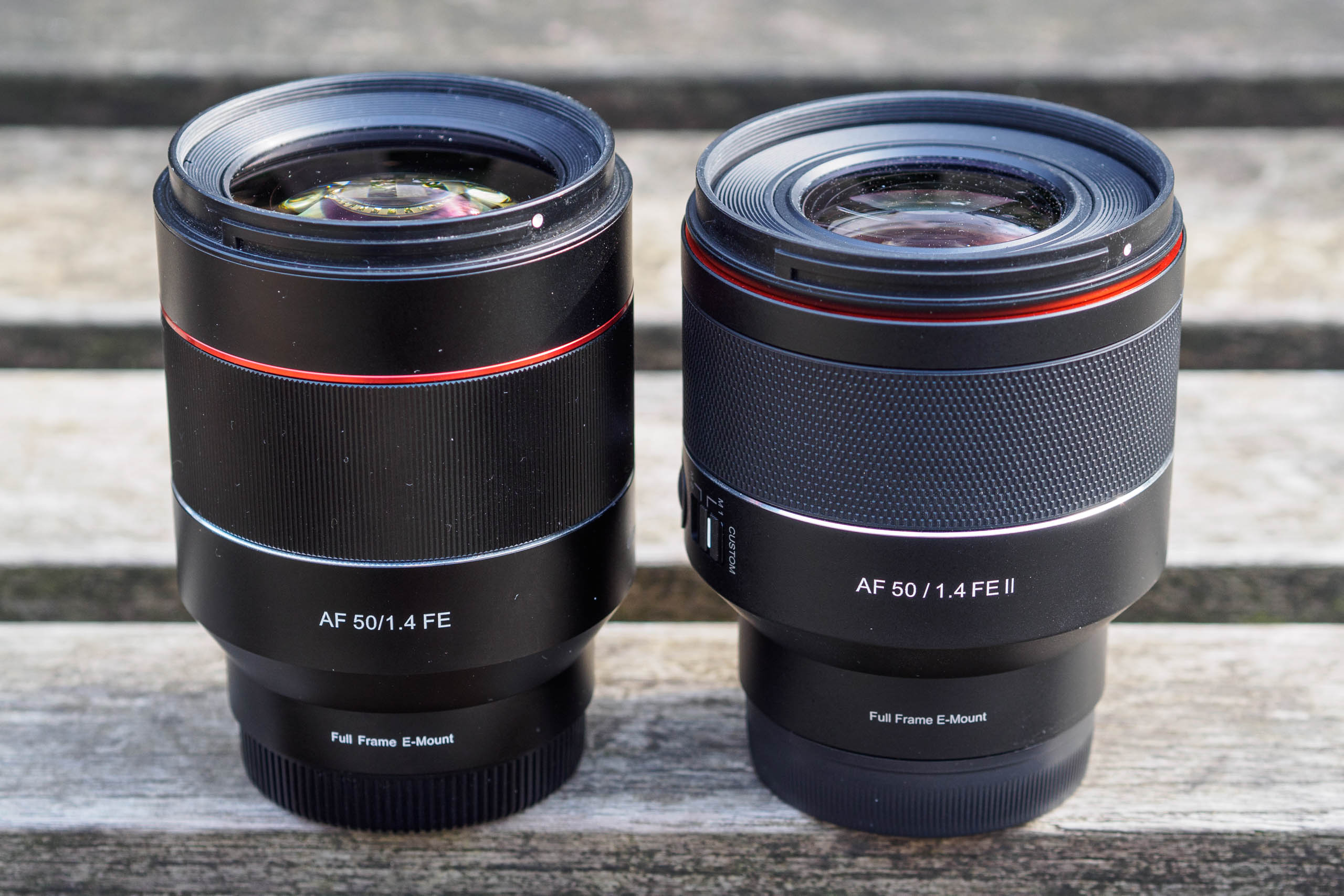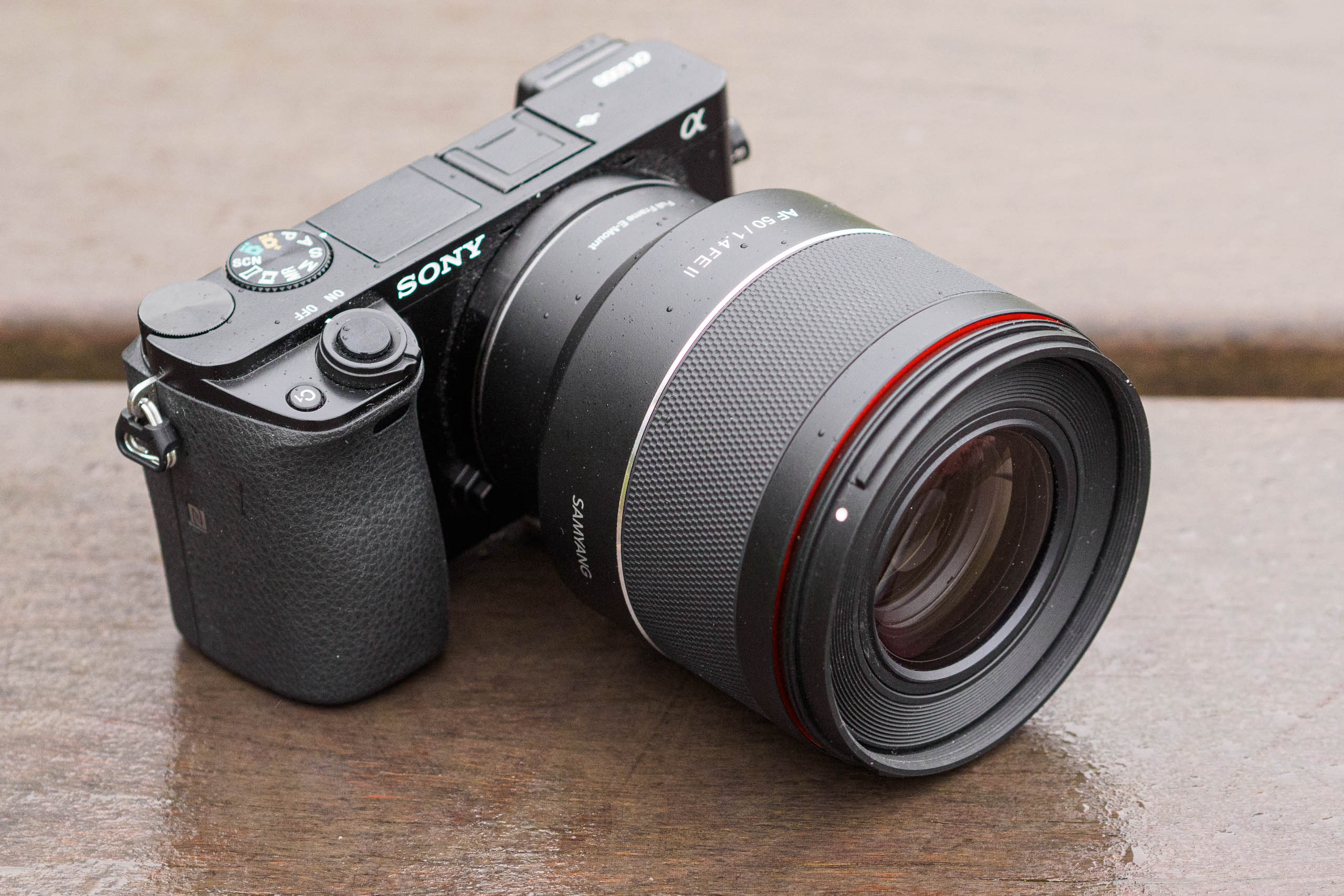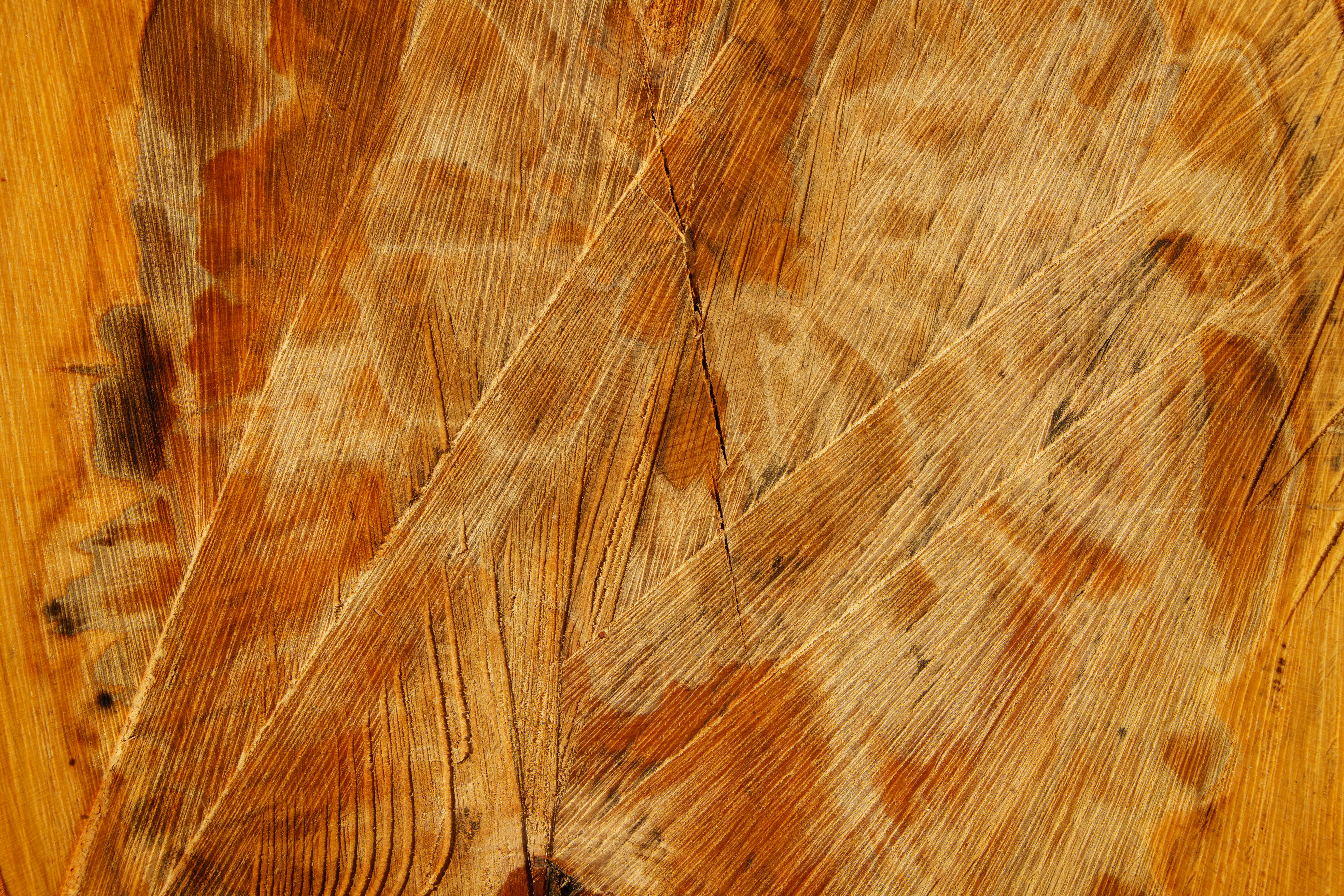Samyang AF 50mm F1.4 FE II at a glance:
- Large aperture standard prime lens
- For full-frame mirrorless cameras
- Available in Sony E-mount
Five years ago, Samyang unveiled its first autofocus lens, the Samyang AF 50mm F1.4 FE. Previously, the firm had been known for making somewhat spartan manual-focus optics, but the new 50mm signalled its ambition to step up a level. It was one of the first third-party autofocus lenses for Sony full-frame mirrorless cameras, at a time when the major Japanese makers were still concentrating on DSLR optics. The AF 50mm F1.4 FE was a decent first effort and capable of delivering very attractive images, but was somewhat unrefined operationally, particularly in terms of autofocus.
Clearly the firm has learned a lot in a short time, because it’s now moved on to its next generation of lenses. Not only has it made its first zoom, the Samyang AF 24-70mm F2.8 FE, it’s also branched out to making autofocus lenses for Fujifilm X-mount, with the Samyang AF 12mm F2 X. The new Samyang AF 50mm F1.4 FE II we’re looking at here isn’t some modest reworking of the existing lens, but instead is a completely new design packed full of extra features.
At £599, the new optic costs £100 more than its predecessor did at launch. This makes it considerably more affordable than Sony’s FE 50mm F1.4 ZA (£1299), but just £50 less than the much-loved Sigma 50mm F1.4 DG HSM | Art. Samyang’s lens has the considerable attraction of being rather smaller and lighter than these rivals, but how does it stand up in terms of quality?
Samyang AF 50mm F1.4 FE II: Features
Even a quick glance through the spec sheet reveals that the Samyang AF 50mm F1.4 FE II improves on its predecessor in almost every imaginable way. This starts with the optical design, which now comprises 11 elements in 8 groups, rather than 9 in 8. Samyang has made more use of special glass, too, including three elements made from High Refractive index (HR) glass, one using Extra-low Dispersion (ED) glass, and two Ultra-precision Aspheric (UA) elements. The overall aim is to improve cross-frame sharpness, minimise colour fringing, and deliver smooth background blur.
A stepper motor is used to drive the focus group, promising rapid, quiet autofocus. The minimum focus distance has decreased from 45cm to 40cm, but this has little impact on the maximum magnification, which increases inconsequentially from 0.15x to 0.16x. This may be disappointing for those who’d like to shoot close-ups, but it supports the firm’s claim that it’s significantly reduced focus breathing, which will be welcome news to videographers. On the old lens, the angle of view narrowed significantly on focusing closer.
The aperture diaphragm employs nine curved blades, with the aim of delivering circular out-of-focus highlights for more attractive bokeh. There’s a thread for 72mm filters (up from 67mm on the previous version), and a deep plastic lens hood is included in the box. While the lens is designed for full-frame cameras, it can also be used on APS-C E-mount models, giving a 75mm equivalent field of view.
Samyang AF 50mm F1.4 FE II: Build and Handling
When you first pick up the Samyang AF 50mm F1.4 FE II, what’s most striking is just how little it weighs. At 420g, it’s over 100g lighter than its predecessor, and practically half the weight of Sigma and Sony’s equivalents. In part this is due to increased use of plastics in the barrel construction, but it still feels perfectly robust, with a metal mount.
The lens is also unusually short for its type, at 9cm, which is 8mm less than the previous lens, and almost 2cm off Sony’s optic. As a result, it feels nicely balanced even on older cameras such as the Alpha 7 II, which has a much smaller handgrip than Sony’s latest bodies. It’s also surprisingly usable on the compact APS-C Alpha 6000, although it’s rather larger in diameter than the rangefinder-style body is tall.
Despite its light weight, the new optic gains a major update in the form of weather-resistant construction, with seals at the front and rear and around the controls. Speaking of which, the lens boasts both an AF hold button and a custom switch that can be used to change the focus ring’s function. But the AF hold button is quite small and requires an unusual amount of pressure compared to those on other lenses.
Set the custom switch to its M2 position, and the focus ring takes control over the aperture from the camera body. Alternatively, using the Samyang Lens Station (£59), it can be configured to work as a conventional AF/MF control. This is what I’d do, as I’m not a fan of using clickless rings for exposure settings. The firm says more functions will be added via a future firmware update.
As is often the case with modern lenses, the manual focus ring operates electronically, with no distance scale or end stops to its rotation. It rotates smoothly with a fair bit of resistance, which means you’re unlikely to nudge it accidentally. A lot of turning is required to get from infinity to close focus, but again this can be adjusted using the Samyang Lens Station. I preferred using it with the MF Sensitivity Setting set to Fast.
Samyang AF 50mm F1.4 FE II: Autofocus
Probably the biggest weakness of the older lens was its autofocus, but Samyang has improved this dramatically on the AF 50mm F1.8 FE II. It operates much more quickly and practically silently, with no disconcerting ‘wobble’ in the viewfinder. About the only possible criticism is that when you’re using a small aperture, it can be sluggish to refocus between different distance zones (close-up, middle distance or long-range). But this is substantially down to Sony’s approach of always viewing at the taking aperture.
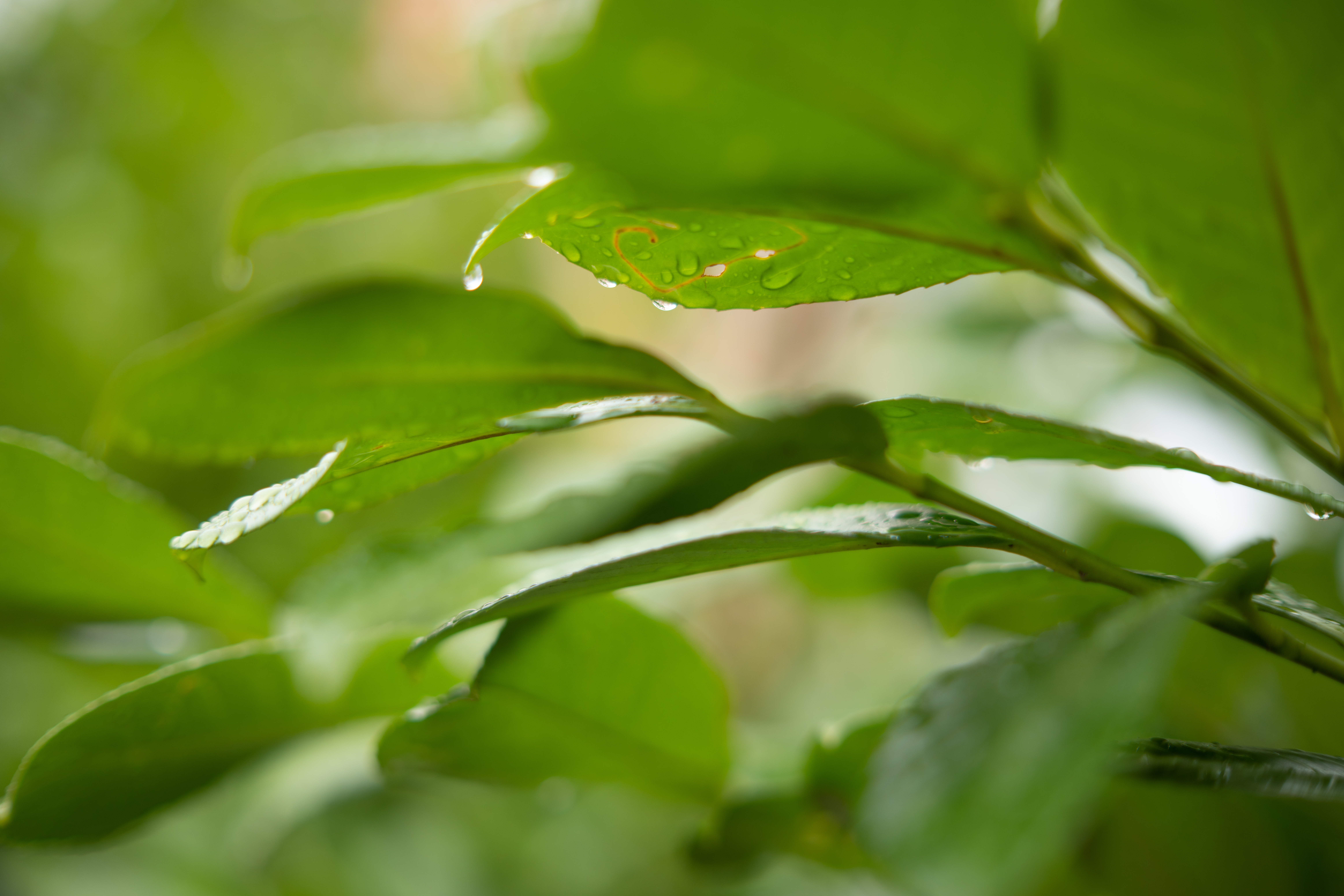
Autofocus is consistently accurate, even at maximum aperture. Sony Alpha 7R IV, Samyang AF 50mm F1.4 FE II, 1/500sec at f/1.4, ISO 100
In general, autofocus is very accurate, wherever in the frame you place the focus point. The lens also works perfectly happily with Sony’s C-AF and tracking technologies. It’ll keep up with subjects moving pretty quickly, too. If you need to override AF, the focus ring gives sufficiently precise control to achieve critically sharp focus. Rotating it also automatically activates a magnified live view display.

Accurate autofocus and impressive sharpness combine to give plenty of scope for cropping. Sony Alpha 7R IV, Samyang AF 50mm F1.4 FE II, 1/1250sec at f/1.4, ISO 100, cropped to 105mm equivalent
Videographers will be pleased to hear that Samyang’s promise of low focus breathing is realised in practice, with barely any change in angle view visible on focusing from infinity right down to 40cm. However, the focus ring’s resistance means that it’s easy to move the camera while focusing.
Samyang AF 50mm F1.4 FE II: Performance
It’s not just in terms of build and autofocus that Samyang has made significant advances. When it comes to image quality, the AF 50mm F1.4 FE II is also an impressive performer. In fact, it’s streets ahead of its predecessor when tested side-by-side on the 60MP Sony Alpha 7R IV.
In the centre of the frame, the lens resolves an excellent level of detail with the aperture wide open, to the extent that you’ll see very little improvement on stopping down – maybe just a little increase in local contrast. What’s more, fine detail is only slightly blurred in the corners of the frame at f/1.4, and sharpens up quickly on stopping down.

At f/8, The Samyang AF 50mm F1.4 FE II is extremely sharp across the entire frame. Sony Alpha 7R IV, Samyang AF 50mm F1.4 FE II, 1/200sec at f/8, ISO 100
By f/4 the lens is pretty much as sharp as it’s going to get, and every bit as good as its predecessor was at f/8. Stop down to f/16 and diffraction takes the edge off the finest detail when viewing files close-up onscreen, but it’s a perfectly acceptable trade-off for the increase in depth of field. Overall, I wouldn’t hesitate to use any of the available apertures.
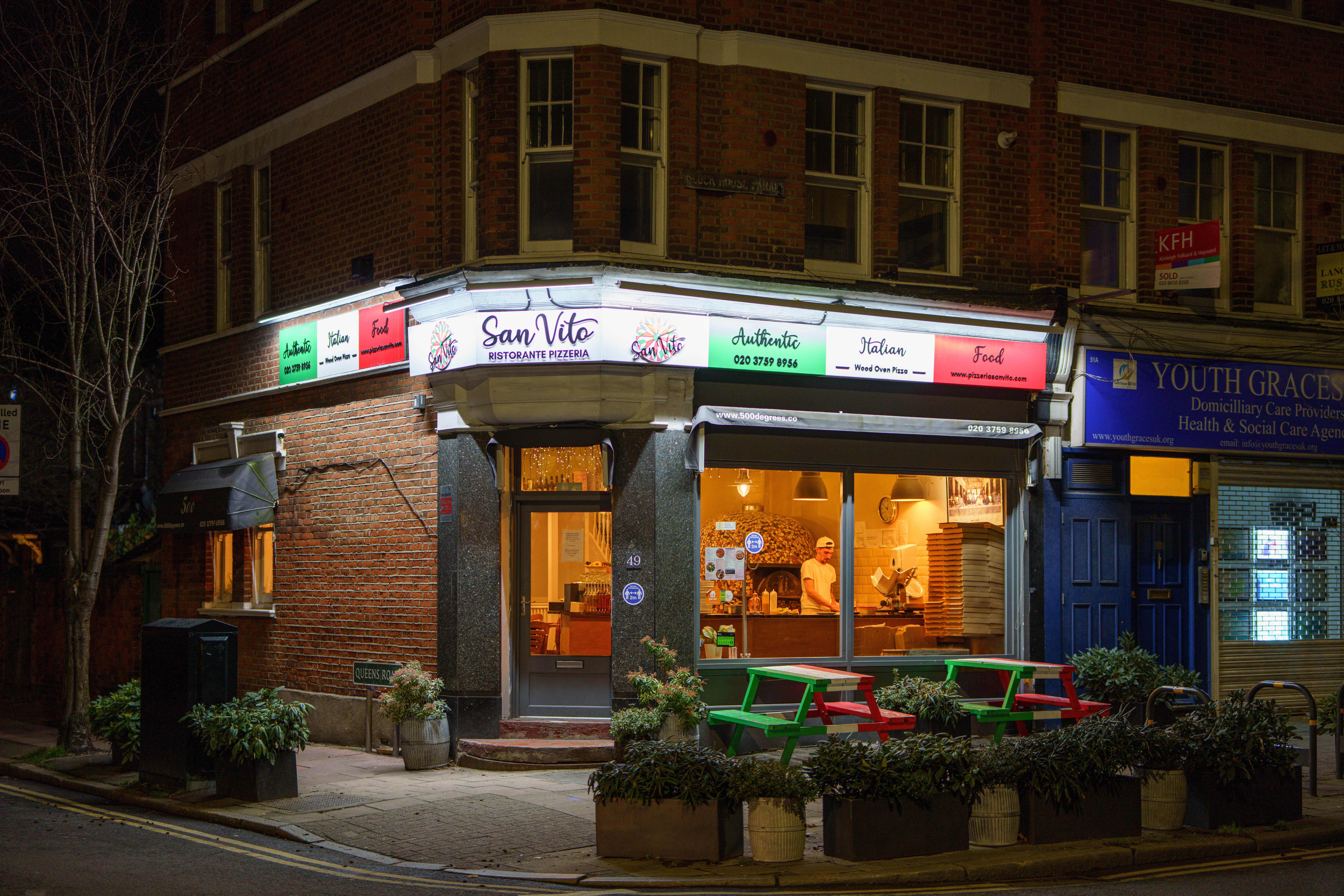
Thanks to its large aperture, the lens is great for shooting in low light. Sony Alpha 7R IV, Samyang AF 50mm F1.4 FE II, 1/50sec at f/1.4, ISO 250
Turning our attention to curvilinear distortion, a small degree of pincushion-type inward bowing of straight lines is apparent, most obviously when flicking back and forth between corrected JPEGs and uncorrected raws in Adobe Bridge. But it’s so slight that you won’t normally notice it in real-world use. In contrast, the older optic was subject to visible barrel distortion.
If you disable in-camera shading correction, then vignetting will be clearly visible at large apertures. But the gradual fall-off in brightness towards the corners of the frame isn’t unattractive, and more likely to help frame your subject than spoil your images. It also disappears on stopping down to f/2.8. If you enable in-camera correction, this vignetting will be processed out of both JPEG and raw files.
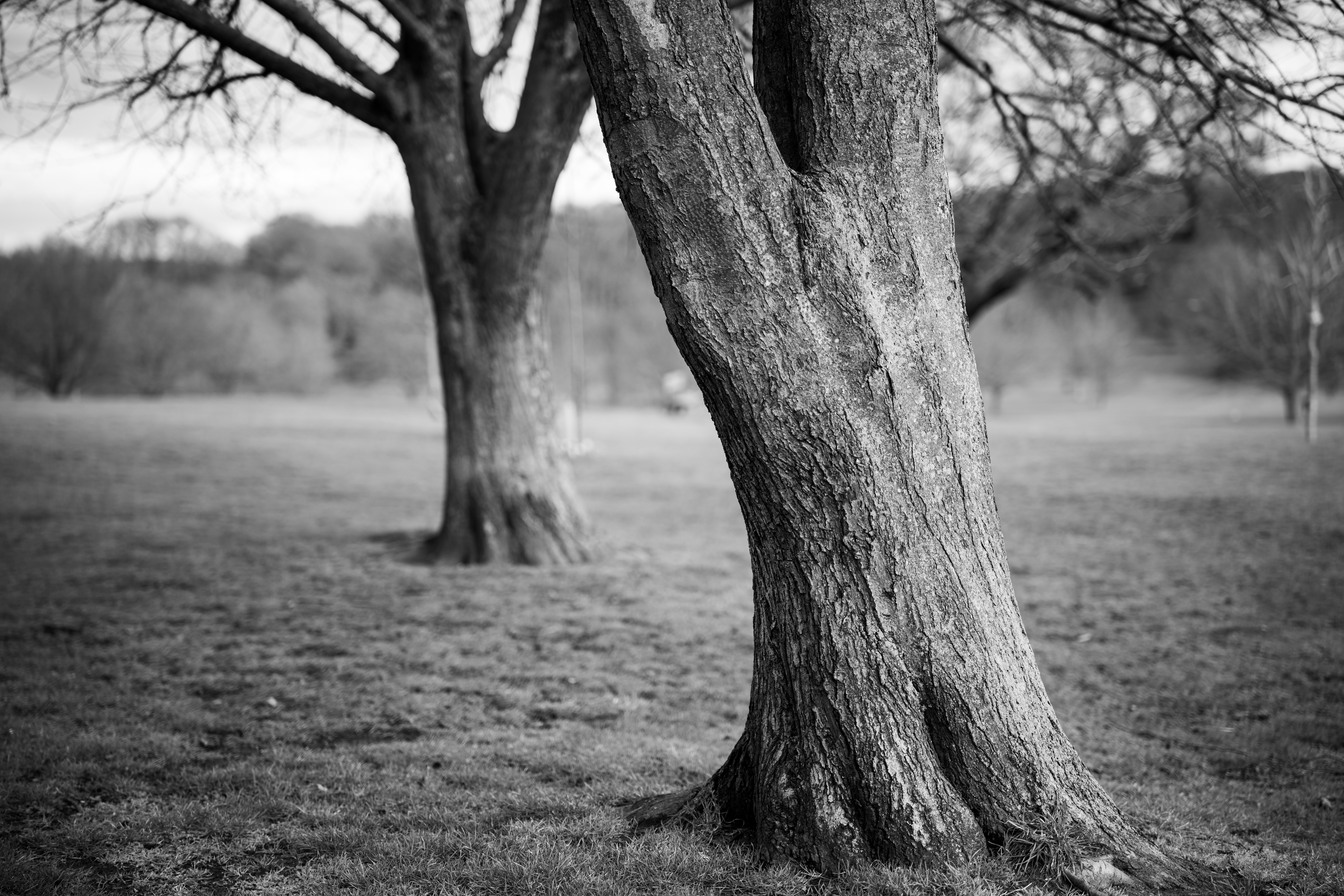
Vignetting is visible at large apertures, but it’s not objectionable. Sony Alpha 7R IV, Samyang AF 50mm F1.4 FE II, 1/640sec at f/1.4, ISO 100
You shouldn’t see any colour fringing towards the corners of the frame at small apertures due to lateral chromatic aberration, as by default it’s corrected automatically both in-camera in JPEG files, and via a profile embedded in the raw files’ metadata. When it comes to the harder-to-fix longitudinal chromatic aberration, you’ll see some colour fringing in out-of-focus regions at large apertures. This tends towards magenta in front of the point of focus, and yellow-green behind. But it can usually be suppressed quite effectively with Adobe’s Defringe tool.
That f/1.4 maximum aperture is great for blurring away backgrounds, and transitions to out-of-focus regions are dealt with smoothly. Bokeh is rendered very attractively at large apertures, and it’s only when you stop down to f/4 or smaller that blur circles take on a hard edge, which gives a harsher appearance.

In this shot, blur circles in the background are truncated due to a combination of fast shutter speeds and electronic first curtain shutter. Sony Alpha 7R IV, Samyang AF 50mm F1.4 FE II, 1/64000sec at f/1.4, ISO 100
It is, however, important to disable the electronic first curtain shutter when shooting at large apertures in bright light. Otherwise at shutter speeds faster than 1/2000sec, you’ll get truncated blur circles that spoil the bokeh.
Samyang AF 50mm F1.4 FE II: Our Verdict
When Samyang released its original 50mm F1.4 back in 2016, it counted as a very decent first effort at an autofocus optic. But expectations have changed since then, with lenses now required to provide a good account of themselves on high-resolution sensors while also offering video-friendly characteristics. Judged against this higher bar, the Samyang AF 50mm F1.4 FE II acquits itself well.
By any sensible measure, this is a fine lens. Optically it’s a massive upgrade on its predecessor; in particular, it’s much sharper at large apertures. Yet it’s also smaller and noticeably lighter, while benefiting from useful additional controls and weather-sealed construction. Autofocus is dramatically improved too, being quicker and quieter, with minimal breathing.
Indeed, casting around for points of criticism feels a little churlish. It probably doesn’t focus quite as rapidly as its rivals, and I wouldn’t expect to get the same hit-rate of perfectly sharp shots when using continuous AF with erratically moving subjects. But this is easily forgiven for a lens that’s less than half the price and practically half the weight of its Sony counterpart.
Where the previous optic was perhaps best seen as a good fit for users of 24MP A7 cameras on a budget, the Samyang AF 50mm F1.4 FE II is now entirely at home on the 60MP Alpha 7R IV, and indeed looks like it has more in reserve for higher resolution sensors. For Sony users looking for a fast standard prime, but who are put off by the size, weight and price of its rivals, it’s an excellent choice.

Samyang AF 50mm F1.4 FE II: Full Specifications
